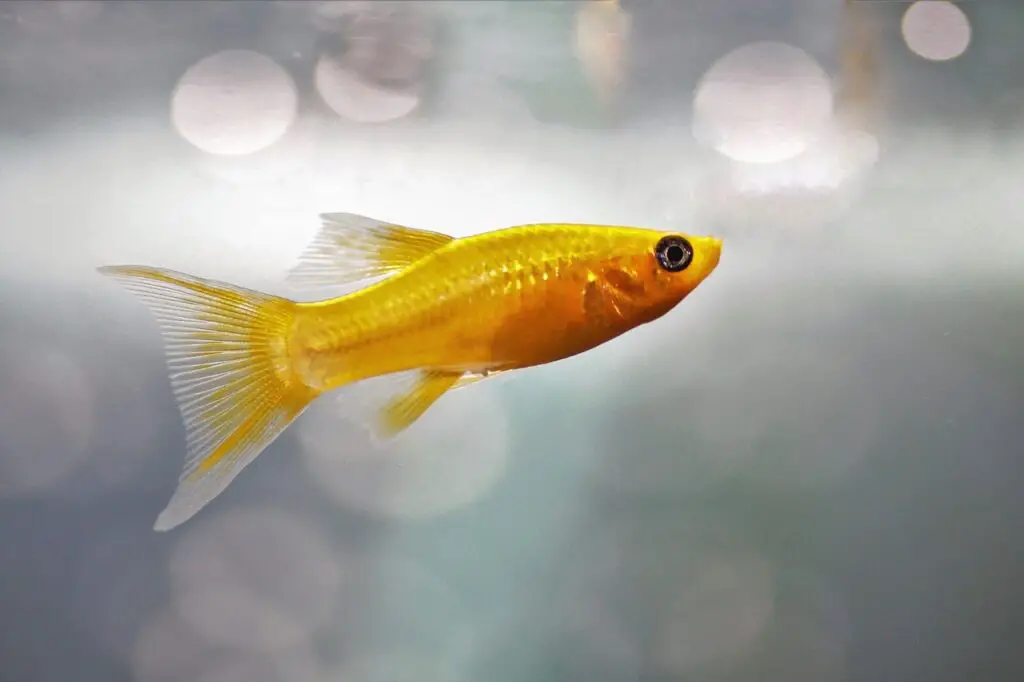Maintaining a tank with mollies and snails can be a rewarding experience. With an understanding of the different needs of each species and proper tank maintenance, a tank can become a peaceful and beautiful environment to watch and enjoy.
It is important to note that mollies are too small to eat snails, and certain snails are more suitable tank mates. Therefore, by understanding the appropriate types of snails and how to maintain the tank, mollies, and snails can have a harmonious tank partnership.
This article will discuss the types of snails suitable for a molly tank, tank maintenance tips, and the benefits of keeping snails.
- Key Takeaways
- Do Mollies Eat Snails?
- Suitable Snail Types
- Tank Maintenance Tips
- Benefits of Keeping Snails
- Frequently Asked Questions
- How can I prevent snail eggs from overpopulating the tank?
- Are there any special tank requirements for mollies and snails?
- Are there any plants that are beneficial to mollies and snails?
- Can other fish be kept in a tank with mollies and snails?
- Is there anything else I should know about keeping mollies and snails together?
- Conclusion
Key Takeaways
- Mollies are too small to eat snails and have a gentle temperament, making them suitable tank mates for snails.
- Golden Mystery Snails, Nerite Snails, Ramshorn Snails, and Assassin Snails are all good options for housing with mollies.
- Snails are not aggressive and won’t eat healthy mollies, but they may eat dead fish and unprotected snail eggs.
- Regular tank maintenance, including monitoring the snail population and performing water changes, is important for the health and balance of the tank.
Do Mollies Eat Snails?
Mollies generally do not eat snails due to their small size, gentle temperament, and preference for other food sources, although baby snails or unprotected snail eggs may tempt them.
Can mollies and snails coexist peacefully in a tank? The answer is yes, with proper tank size and population management. Golden Mystery Snails, Nerite Snails, Ramshorn Snails, and Assassin Snails are all suitable tank mates with mollies and can bring beauty, efficiency, and balance to the tank.
Snails can help control the snail population by eating unprotected eggs and cleaning the tank, but their waste must be managed by regular tank cleaning and water changes.
How can tank size and population be managed when keeping mollies and snails together? Careful consideration should be taken when deciding the tank size and the number of inhabitants, as some snails reproduce quickly and can overcrowd the tank. Monitoring the snail population is important to prevent overpopulation and ensure adequate space and oxygen for all inhabitants.
Suitable Snail Types
Certain species of aquatic gastropods can be safely housed together with fish to create a balanced aquatic environment. Compatibility is key when choosing snails for a tank that already houses mollies. This includes selecting snails that won’t reproduce in freshwater and monitoring the snail population. Popular choices are Golden Mystery Snails, Nerite Snails, Ramshorn Snails, and Assassin Snails.
Golden Mystery Snails add color to the tank and are excellent at cleaning, making them suitable tank mates for mollies.
Nerite Snails are peaceful and ideal for keeping the tank clean.
Ramshorn Snails are beautiful and don’t grow too big, but they can reproduce quickly, so their population should be monitored.
Assassin Snails can help keep the snail population in check and won’t attack other fish.
Ultimately, it is important to consider the size of the tank and the number of snails and mollies it can accommodate. Regular tank cleaning and water changes are essential to maintain the fish’s health and the ecosystem’s balance. By selecting the correct snails, mollies, and snails can live in harmony.
Tank Maintenance Tips
Proper tank maintenance creates a balanced environment where mollies and snails coexist. Snails help keep the tank clean by eating leftover fish food and algae and contribute to waste, so regular tank cleaning is crucial. The snail population should be monitored to prevent overpopulation and snail eggs should be controlled with certain chemicals. Regular water changes are necessary to keep the tank clean and maintain the health of the mollies.
| Maintenance Tip | Benefits |
|---|---|
| Monitor snail population | Prevents overpopulation |
| Control snail eggs | Helps control snail population |
| Regular water changes | Keeps tank clean and healthy |
Keeping the tank clean and controlling the snail population is key to creating a harmonious partnership between mollies and snails. It is of the utmost importance to stay on top of regular water changes and maintain the proper balance within the tank to ensure the safety of all inhabitants.
Benefits of Keeping Snails
Keeping snails in a freshwater tank offers numerous benefits.
- Waste management: Snails act as tank cleaners by eating leftover fish food and algae, helping to maintain a healthy and balanced ecosystem.
- Algae control: Snails are crucial in controlling algae growth in the tank. They consume algae, preventing it from overrunning the tank and creating an unsightly and unhealthy environment.
- Population regulation: Snails contribute to the overall balance of the tank by preying on other snail species and eating unprotected snail eggs. This helps to regulate the population, as well as reduce the risk of overpopulation.
- Visual appeal: Snails have the added benefit of adding an interesting element to the tank with their unique markings and colors. They can be a fascinating addition to the tank, providing visual interest and diversity.
Therefore, snails are an important addition to any mollie tank, as they help maintain a healthy environment and add visual appeal.

Frequently Asked Questions
Conclusion
In conclusion, mollies and snails can be beneficial tank partnerships if the tank size and population are monitored and appropriate snail types are chosen.
Regular water changes must be made to ensure the tank’s and its inhabitants’ health.
With proper maintenance, a beautiful and peaceful tank can be created, with both mollies and snails living harmoniously.
